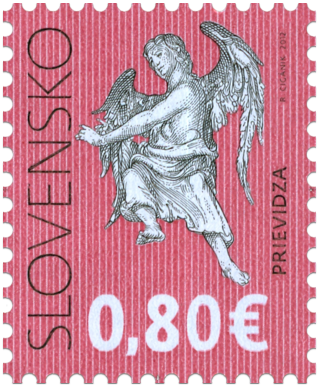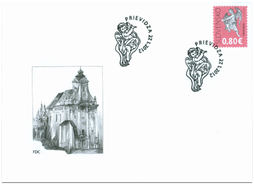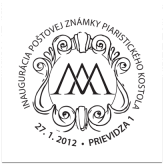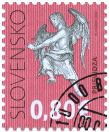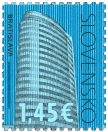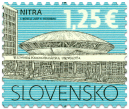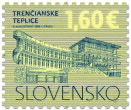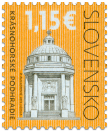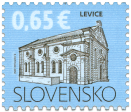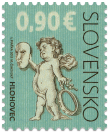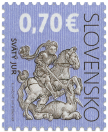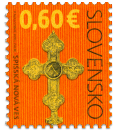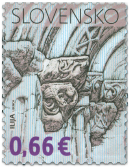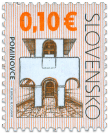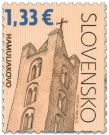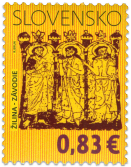510 Date of issue
27.01.2012 Face value
0.80 € Sell price
0.80 €
School piarists order began their activities at our territory in the counter-reformation period. Piarists came to Horná Nitra region in 1666 at the invitation of Mária Františka Pálffyová, widow of Hungarian palatine. With her support, they finished building of college in Prievidza in 1676, and building of church two years later. However, they could develop their activities fully only in the 18th century.
In 1740, Piarists started a complex reconstruction of their monastery church, managed by father Hyacint Hangke, a college administrator. They dismantled the original church and started to build foundations for the new one according to the demanding late baroque concept. Remarkable designs of still unidentified architect, from which the new construction of single nave church with a tower in the facade emanated, were executed in simplified and partially modified form. The position of superintendant was held by Ignác Peter Götz, builder from Kremnica. Stone statues of saints in niches and central sculpture representing St. Mary’s coronation by the St. Trinity in the middle of facade are the first recorded works in Slovakia by Dionýz Ignác Stanetti, sculptor from Silesia region. Painter Anton Schmidt was concerned with church artistic decoration; he was replaced in summer 1751 by another Vienna painter, Ján Štefan Bopovsky-Bojack who later executed a significant part of interior painting decoration. Frescos on arches and pictures on side altars of which Bojack finished only four by the time of his premature death in 1753, were later finished by other painters, his colleagues.
Unified interior of Piarist’s church in Prievidza created by combination of architecture, painting and sculpture is exceptional in Slovak baroque art due to its conception. Space solution of monumental main altar is particularly unique. Its dynamic slope architecture complemented by Stanetti’s baldachin sculpture arrangement fills whole presbytery area. Spatially staged Assumption of the Virgin continues at a lower level in undercroft under the altar, where a smaller Pieta altar is located, lighted by light wells hidden behind the altar.
The church was consecrated on August 19, 1753 by Pavol Révay, Esztergom canonist and titular bishop. However, overall interior decoration and equipment in the final form was still being complemented in the second half of the 18th century.
Jozef Medvecký
© 2024 POFIS - Postal philatelic service. All rights reserved

